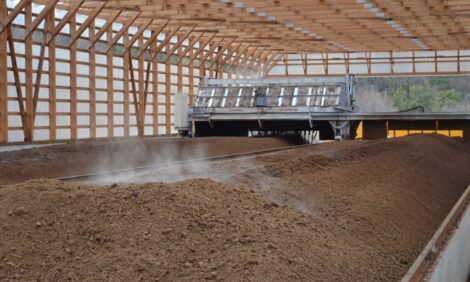



European Poultry Conference spotlights precision nutrition
Selko research at European Poultry Conference shows how trace mineral source affects immune response, zootechnical and performance factorsResearch conducted by Selko, the feed additives brand of Nutreco, is showing how the source of trace minerals can support monogastric animals’ immune response in livestock production. The findings further reveal that combining more bioavailable trace mineral sources in poultry diets may improve flock performance and zootechnical variables. The findings were presented at the European Poultry Conference (EPC), 24-28 June in Valencia, Spain.
Steering immune responses under an LPS challenge: During EPC, Gavin Boerboom, Selko’s global program manager for minerals, will share findings from trials that looked at the efficacy of IntelliBond trace minerals in supporting birds under an LPS challenge compared to birds receiving inorganic sources of zinc and manganese. Boerboom will comment on findings revealing how physiological activities inside the bird, including the superoxide dismutase (SOD) response, are elicited by trace mineral source. His remarks will shed light on internal processes that drive functions linked with performance improvements including improved uniformity and resilience. “The more we discover about how nutrition influences the animal’s immune response, the more we can use the diet to address production stressors such as a disease challenge or heat stress,” Boerboom said.
Selko’s research expands on previous IntelliBond trace mineral studies evaluating how trace mineral source affects critical functions that drive performance. While earlier studies have shown that feeding a less soluble, higher-quality source of zinc, manganese and copper trace mineral can help support reproduction, growth and immunity, new findings help explain the mode of action driving improved immune response and resiliency.
As environmental regulations and marketplace demands put more pressure on producers, the research suggests that dietary interventions can help producers support the animal and comply with more stringent production demands. Looking at the marketplace, some restaurant chains are seeking more consistent, uniform broiler breasts to boost processing efficiencies. By supporting immune response, the trace mineral source may help reduce variation due to challenges such as diseases and contribute to improved uniformity in flocks. Research has also shown that feeding a higher quality source of copper, zinc or manganese can meet the bird’s needs at a lower inclusion level compared to inorganic trace mineral sources, meaning less waste is excreted in the environment. “When an animal’s trace mineral requirements can be met at a lower level, the nutritionist has more flexibility to adapt the diet if the need is there,” said Boerboom.
Replacing inorganic trade minerals with a bioavailable combination strategy: A study conducted in Mexico involving 1650 broiler chickens looked at growth performance under three dietary treatments fed at nutritional levels in a mash premix. Chickens were randomly allocated to a negative control diet (T1) with no additional trace minerals supplemented, a treatment group (T2) including sulfate sources of copper, manganese, and zinc, and a second treatment group (T3) combining highly bioavailable IntelliBond hydroxychloride trace minerals with Optimin organic trace minerals.
Researchers tracked growth performance across three growth phases. The Total Areas of Contact (ATC) in the gut with nutrients in the feed was calculated using morphometry. Researchers measured the crypt depth to length ratio, number of villi found in a set area and the total contact area with nutrients in the gut. The study findings showed that the T3 diet combining high bioavailable trace mineral sources including IntelliBond and Optimin minerals resulted in a higher body weight and better feed conversion compared to inorganic trace mineral sources T2 diets. Morphometry revealed that at 11 days of age, birds receiving the combination of IntelliBond and Optimin trace minerals had a higher value in the ATC index consistent with the results of better performance.
“Study results demonstrated that providing a combination of high bioavailable mineral sources including IntelliBond and Optimin minerals can improve parameters and zootechnical variables,” said Boerboom. He added that the combination strategy provides an attractive option for today’s producers who are striving to meet the market’s demand for high-quality and affordable protein.
The findings reflect that small changes to the diet can have an outsize benefit on performance.
“A common question is how something as small as trace minerals can result in an observable performance improvement,” said Boerboom. “Trials continue to validate the benefits of feeding a higher quality trace mineral source and we look forward to revealing more about the modes of action uncovered in recent trials at EPC,” he said. Research posters on display at EPC will further illuminate Selko’s trace mineral research.








